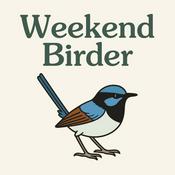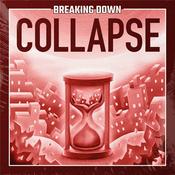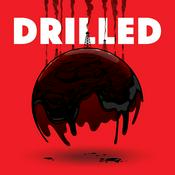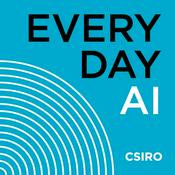290 episodes
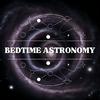
Black Hole Winds at 60,000 km/s: First Real-Time Observation of Galactic Super-Eruptions
31/12/2025 | 22 mins.
For the first time ever, astronomers have caught a supermassive black hole throwing a cosmic tantrum in real-time.Scientists watched as a black hole in galaxy NGC 3783 unleashed winds screaming at 60,000 kilometers per second—roughly 20% the speed of light—within 24 hours of a massive X-ray flare. Using the XMM-Newton and XRISM telescopes, researchers captured the unprecedented moment when magnetic fields violently shifted, triggering these galaxy-shaping outflows. What's shocking? These cosmic eruptions mirror solar flares from our own Sun, just scaled up to mind-bending proportions. We break down how these black hole winds sculpt entire galaxies, control star formation across cosmic distances, and why witnessing this event unfold so rapidly is rewriting our understanding of how the universe's most powerful objects shape everything around them.

Is the Universe Asymmetrical? Scientists Find Cosmic Dipole Anomaly That Breaks Physics
29/12/2025 | 34 mins.
Is the universe lopsided? New research is shaking the foundations of cosmology by revealing a cosmic dipole anomaly—a troubling mismatch between ancient background radiation and the distribution of distant matter across space. This asymmetry directly challenges the standard cosmological model, which assumes the universe looks uniform in all directions.Scientists have discovered our cosmos may be fundamentally unbalanced, failing a critical symmetry test that underpins modern physics. We break down what this lopsided universe means for everything we thought we knew about cosmic structure, and how next-generation telescopes and AI could force us to completely rebuild our understanding of reality itself.

Enceladus Life Search: Saturn's Moon Shows Signs of Alien Biology
27/12/2025 | 30 mins.
Could alien life exist beneath the icy surface of Saturn's moon? New analysis of Cassini spacecraft data reveals that Enceladus harbors the essential ingredients for life.Scientists studying plumes erupting from the moon's southern pole have discovered organic molecules and key chemical elements in a hidden global ocean kept warm by tidal heating. With likely hydrothermal vents providing energy for potential chemosynthetic organisms—life that doesn't need sunlight—Enceladus has jumped to the top of the list for alien life detection.We explore why finding even a single bacterial cell in these ice grains could rewrite our understanding of life in the universe and what future missions might discover in this alien ocean world.

Finding Aliens by Studying Fireflies: Rethinking the Search for ETs
25/12/2025 | 35 mins.
Scientists are rethinking the search for extraterrestrial intelligence by studying firefly bioluminescence instead of only looking for human-like radio signals. Traditional SETI efforts suffer from anthropocentric bias, assuming aliens would develop technology mirroring our own. Fireflies evolved energy-efficient, structured light signals that stand out distinctly from environmental backgrounds—offering a universal model for how any intelligent civilization might communicate. By focusing on mathematical patterns that differ from cosmic noise like pulsars, rather than specific technologies, researchers hope to detect alien signals we'd otherwise miss. This new approach using digital bioacoustics and evolutionary communication principles could help us find civilizations that transmit information in ways humans never imagined.

SPHEREx Maps the Entire Sky in 3D Infrared
23/12/2025 | 38 mins.
NASA's SPHEREx telescope has created the first complete 3D infrared sky map using 102 wavelengths invisible to human eyes. This revolutionary dataset tracks galaxy evolution and the chemical building blocks of life across hundreds of millions of celestial objects.Unlike telescopes studying narrow fields, SPHEREx scans the entire cosmos every six months, measuring distances through spectroscopy to reveal how the universe expanded after the Big Bang.The freely available data helps scientists understand how our universe became habitable, with multiple scans planned over two years to enhance observation quality.
More Science podcasts
Trending Science podcasts
About Bedtime Astronomy
Listen to Bedtime Astronomy, Ologies with Alie Ward and many other podcasts from around the world with the radio.net app

Get the free radio.net app
- Stations and podcasts to bookmark
- Stream via Wi-Fi or Bluetooth
- Supports Carplay & Android Auto
- Many other app features
Get the free radio.net app
- Stations and podcasts to bookmark
- Stream via Wi-Fi or Bluetooth
- Supports Carplay & Android Auto
- Many other app features


Bedtime Astronomy
download the app,
start listening.






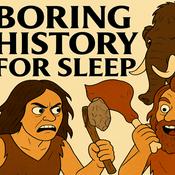











![Podcast Cosmosis [Formerly The UFO Rabbit Hole]](https://au.radio.net/podcast-images/175/the-ufo-rabbit-hole-podcast.jpeg?version=c4cfeed14331265219e0263fd62be755644a8cf4)



